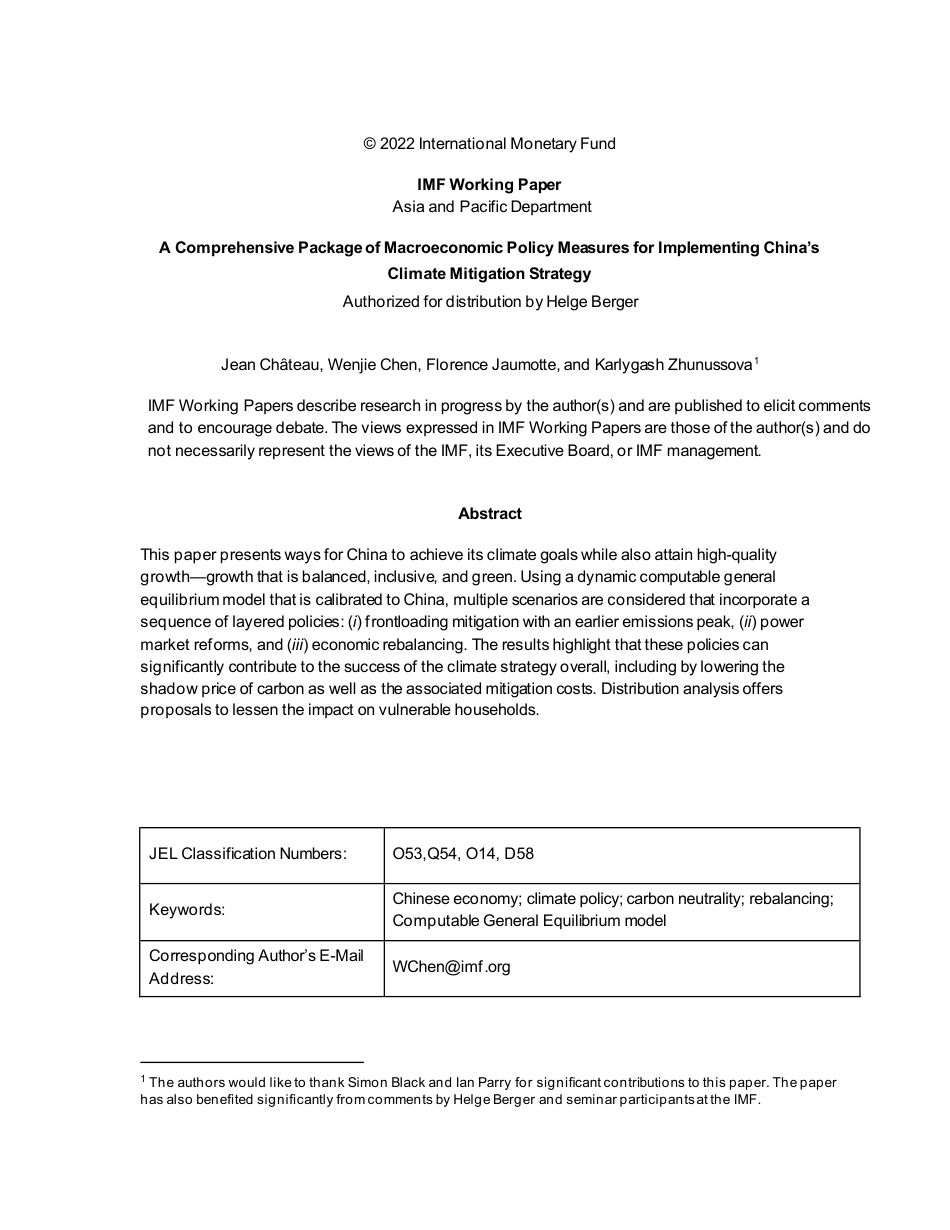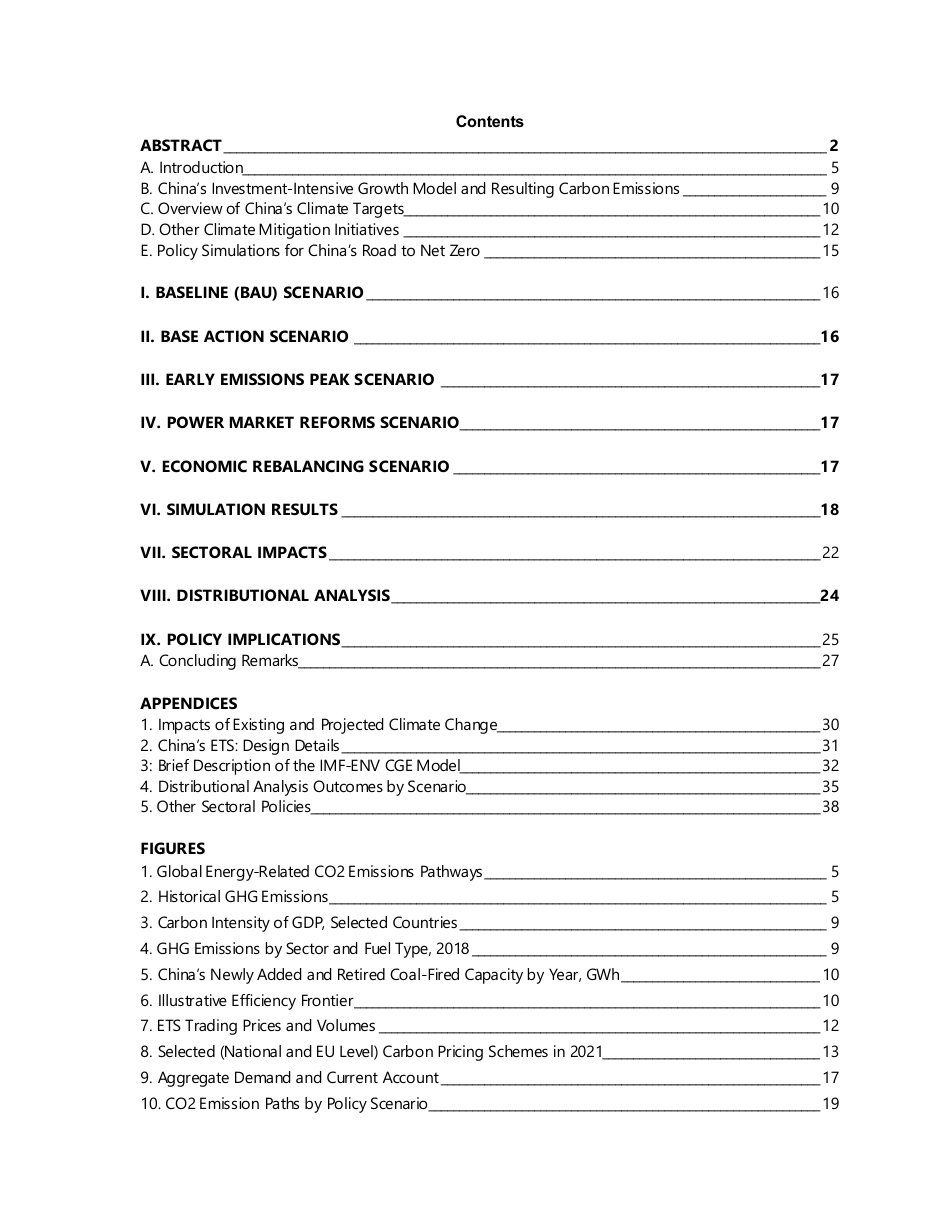2022 JULY A Comprehensive Package of Macroeconomic Policy Measures for Implementing China’s Climate Mitigation Strategy Jean Chateau, Wenjie Chen, Florence Jaumotte, and Karlygash Zhunussova WP/22/142© 2022 International Monetary Fund IMF Working Paper Asia and Pacific Department A Comprehensive Package of Macroeconomic Policy Measures for Implementing China’s Climate Mitigation Strategy Authorized for distribution by Helge Berger Jean Chȃteau, Wenjie Chen, Florence Jaumotte, and Karlygash Zhunussova1 IMF Working Papers describe research in progress by the author(s) and are published to elicit comments and to encourage debate. The views expressed in IMF Working Papers are those of the author(s) and do not necessarily represent the views of the IMF, its Executive Board, or IMF management. Abstract This paper presents ways for China to achieve its climate goals while also attain high-quality growth—growth that is balanced, inclusive, and green. Using a dynamic computable general equilibrium model that is calibrated to China, multiple scenarios are considered that incorporate a sequence of layered policies: (i) frontloading mitigation with an earlier emissions peak, (ii) power market reforms, and (iii) economic rebalancing. The results highlight that these policies can significantly contribute to the success of the climate strategy overall, including by lowering the shadow price of carbon as well as the associated mitigation costs. Distribution analysis offers proposals to lessen the impact on vulnerable households. JEL Classification Numbers: O53,Q54, O14, D58 Keywords: Chinese economy; climate policy; carbon neutrality; rebalancing; Computable General Equilibrium model Corresponding Author’s E-Mail Address: WChen@imf.org 1...



